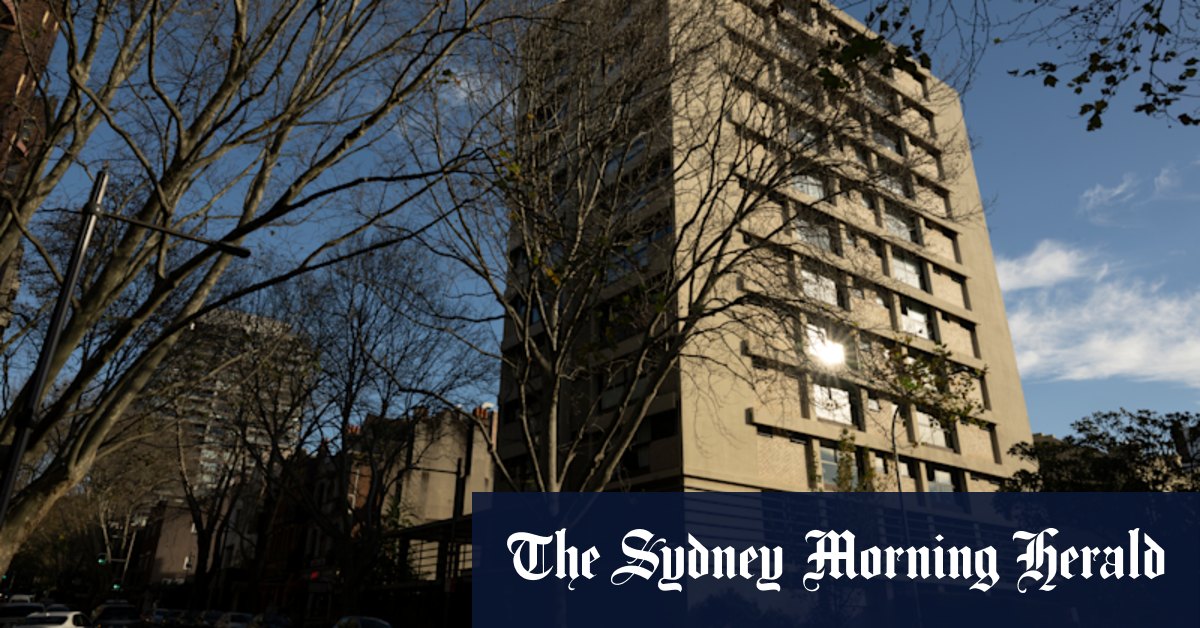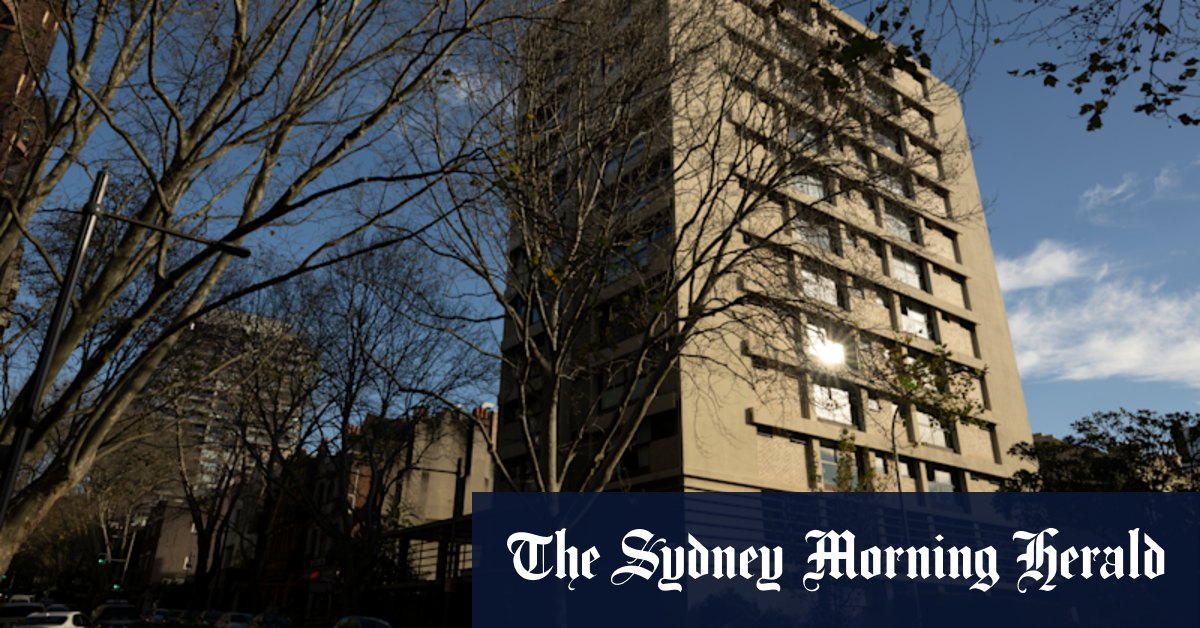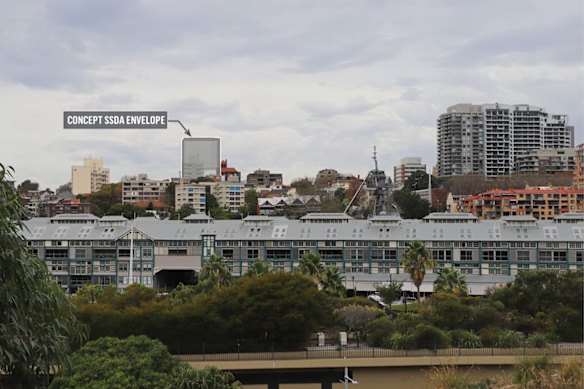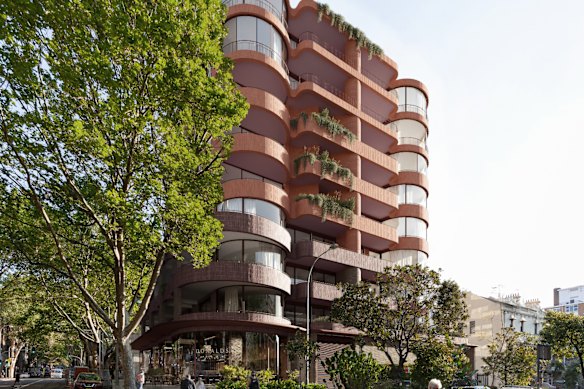Earlier plans to overhaul the site turned the Chimes into a lightning rod for debate about the trend of bulldozing Sydney’s older, cheaper units for luxury developments with fewer, bigger apartments.
The new concept proposes ground-floor retail space to activate the streetscape and about 12 floors of residences in a building up to 50 metres. Time and Place suggested its future detailed designs would include more than 34 apartments and a “significantly” higher number of affordable homes.
The proposal seeks approval for a 50-metre-tall building with ground-floor retail spaces and about 12 floors of residences.
Nearly 150 negative submissions – including from the City of Sydney Council – on the proposal raised concerns about a net loss of affordable housing, demolition of an “iconic” building rather than its adaptive reuse, and the “excessive” bulk and scale of the proposed building envelope.
A response to those submissions, prepared for Time and Place by consultants Urbis in June, said the proposal would deliver diverse and affordable housing in an accessible location, “directly responding to the NSW government’s policy mandate to improve housing choice and affordability”.
It said the “bulk and scale of the proposal would not result in any unacceptable overshadowing, visual or landscaping impacts”, and that technical analysis had determined that renovating the existing building would “result in a much poorer and constrained development outcome”.
Loading
Time and Place said it was “passionate about redeveloping the site into a high-quality, well-considered development that will provide a significant contribution to affordable housing supply while also improving the streetscape experience and replacing a building that is long past its prime”.
Potts Point Preservation Group chairman Peter Sheridan said building much-needed housing was “an estimable idea” but erasing the Chimes building for fewer apartments “makes no sense at all”.
He said developers viewed Potts Point and Elizabeth Bay as “another Point Piper. If they can get extra height, they create views, and they can sell those top apartments for $30 or $40 million.”
“The issue is the existing affordable housing is being pulled down with the idea this will create new housing.
“In fact, we’re losing housing stock, our residents, our diversity, and what’s being offered in return is a token nonsense of affordable housing, which isn’t affordable to people who currently live there, and is just creating enormous returns for developers,” Sheridan said.
An artist’s impression of an earlier proposal for the Chimes site, which sought to replace 80 apartments with 31.Credit: City of Sydney planning portal
The Macleay Street project brings together an elite group of property identities. Company records show Time and Place Chimes Pty Ltd has two directors: Tim Price, the founder of developer Time and Place, and Todd Nisbet, a former Crown Resorts executive when it was run by James Packer.
In June, News Corp reported Time and Place had development funding from Packer, and it had previously reported that the tycoon had taken a 10 per cent stake in the Macleay Street project.
Potts Point Preservation Group founder Warren Fahey last year said: “We’re fighting something that’s backed by Packer money. It’s a considerable wallet to say the least.”
Loading
Scully said the government’s infill affordable housing scheme was “a clear example of how smart planning incentives can drive real results, delivering affordable housing alongside market housing”.
“The pathway has so far seen nearly 1600 affordable homes already approved and nearly 2400 more under assessment, many of which would not have existed without the incentive scheme.”
The luxury redevelopment phenomenon prompted the City of Sydney to adopt new regulations to restrict dwelling loss.
Approved in June, the rules limit any “net dwelling loss” to 15 per cent or one apartment, whichever is greater. But they are not retrospective and, in any case, would not apply to the Chimes, given the newest proposal is a state significant development application.
Developer lobbyist Tom Forrest of the Urban Taskforce previously said the luxury revamp problem was “confected” and preserving run-down buildings for affordable homes was a “failure of policy”.
Start the day with a summary of the day’s most important and interesting stories, analysis and insights. Sign up for our Morning Edition newsletter.









